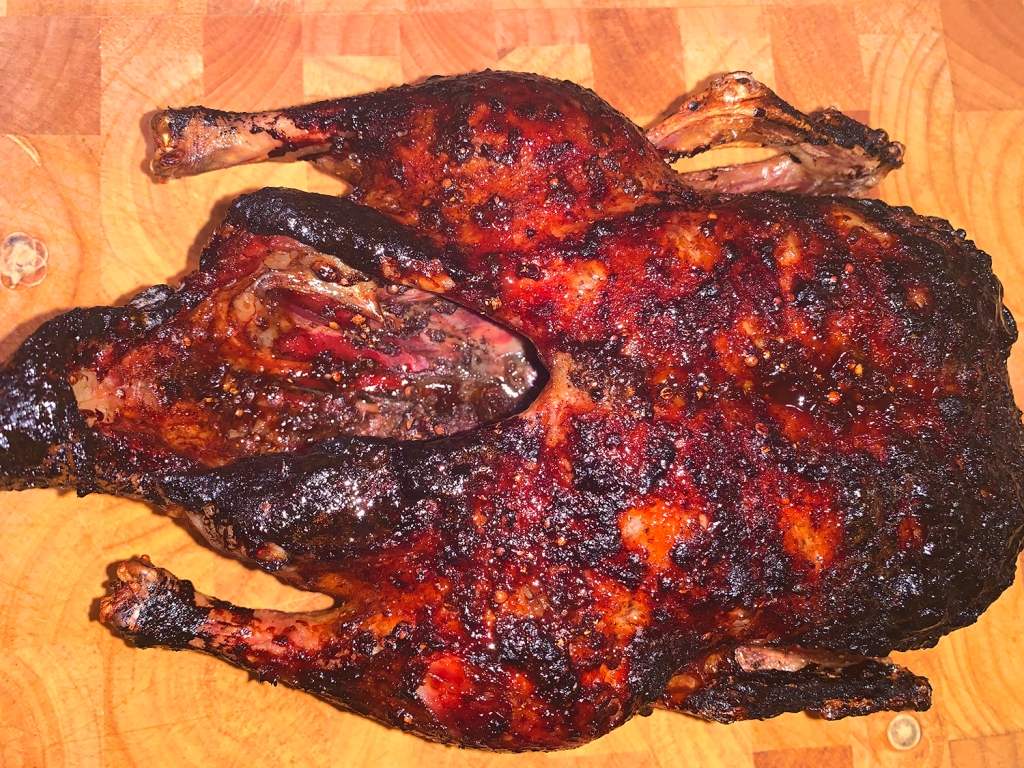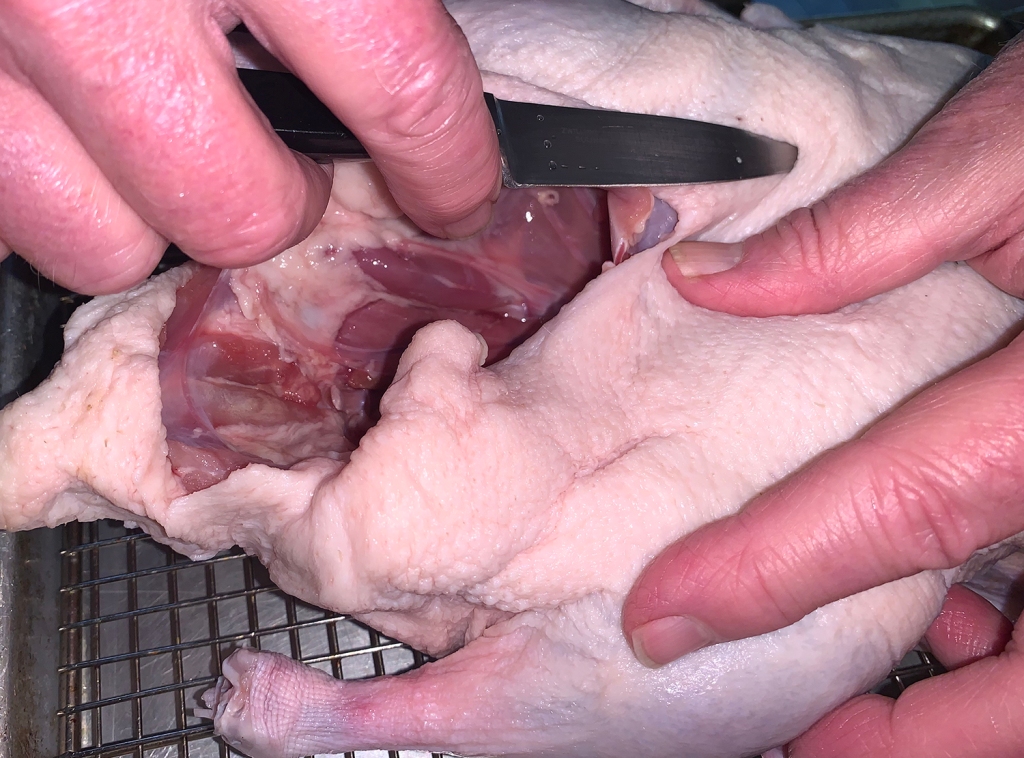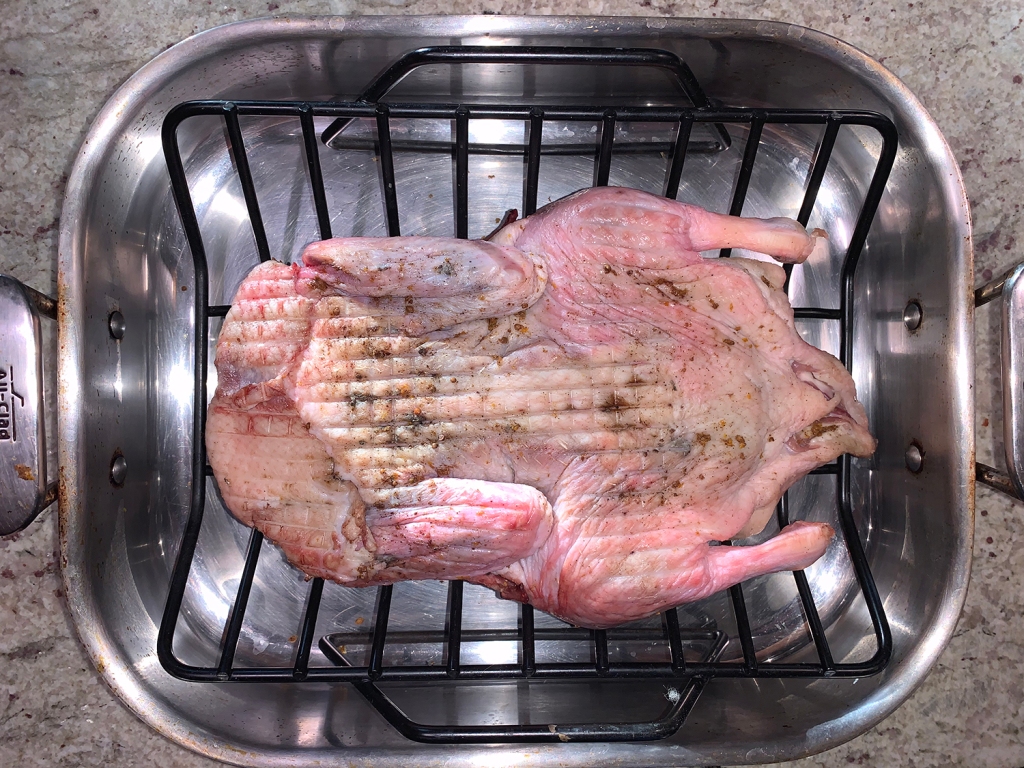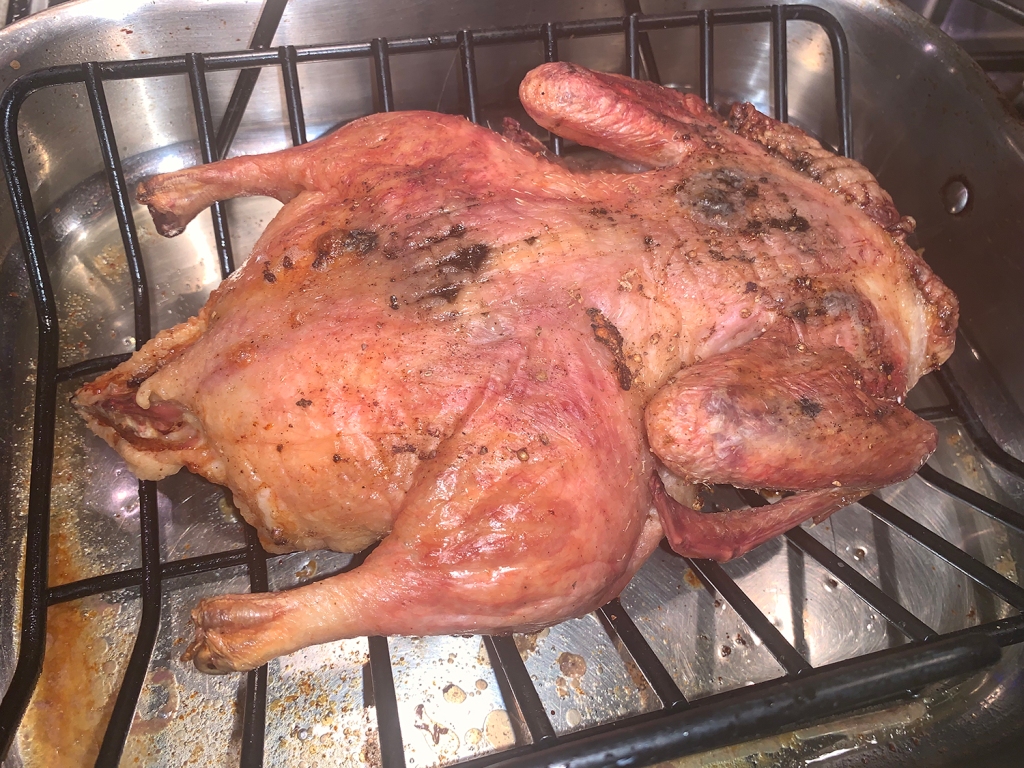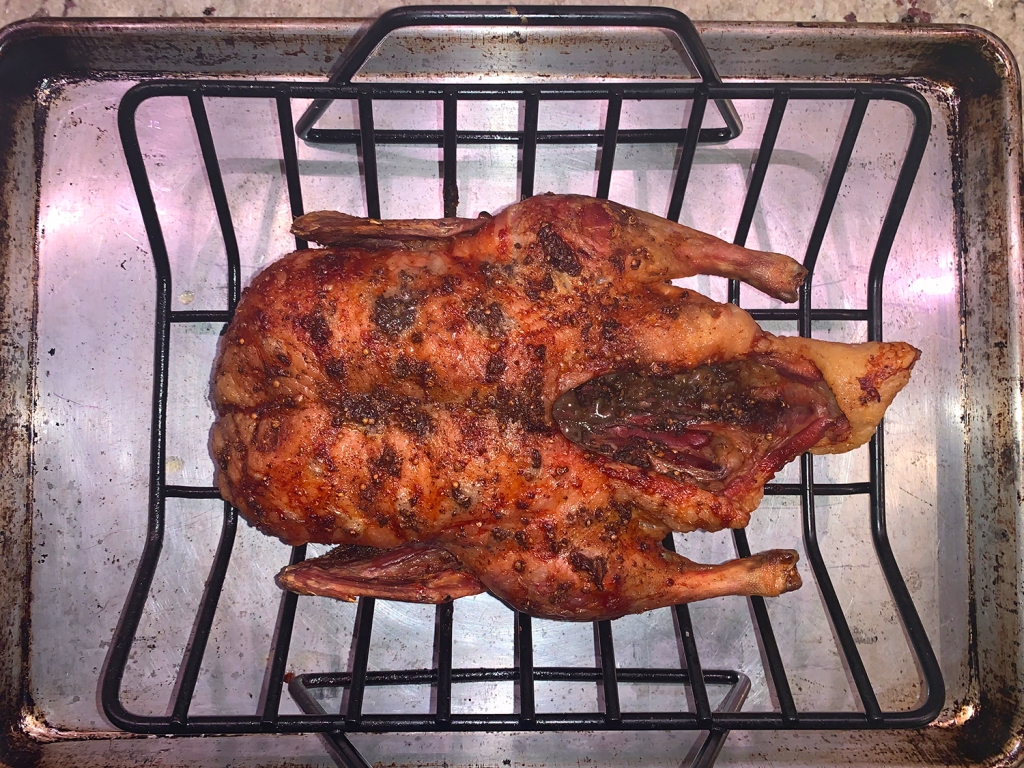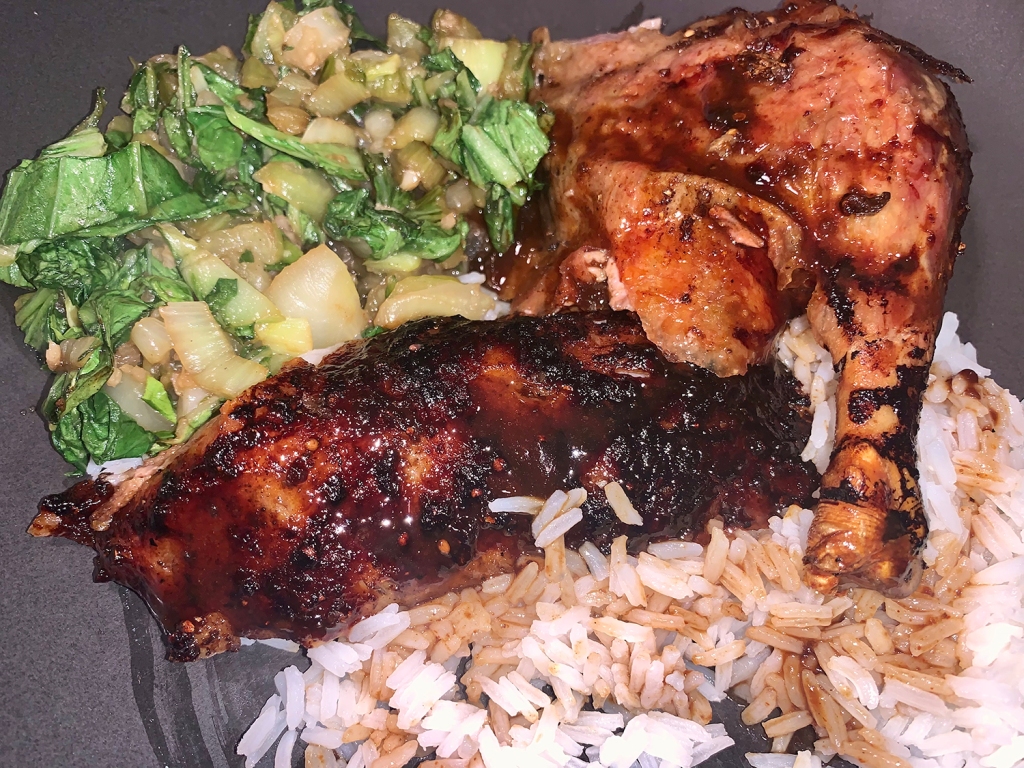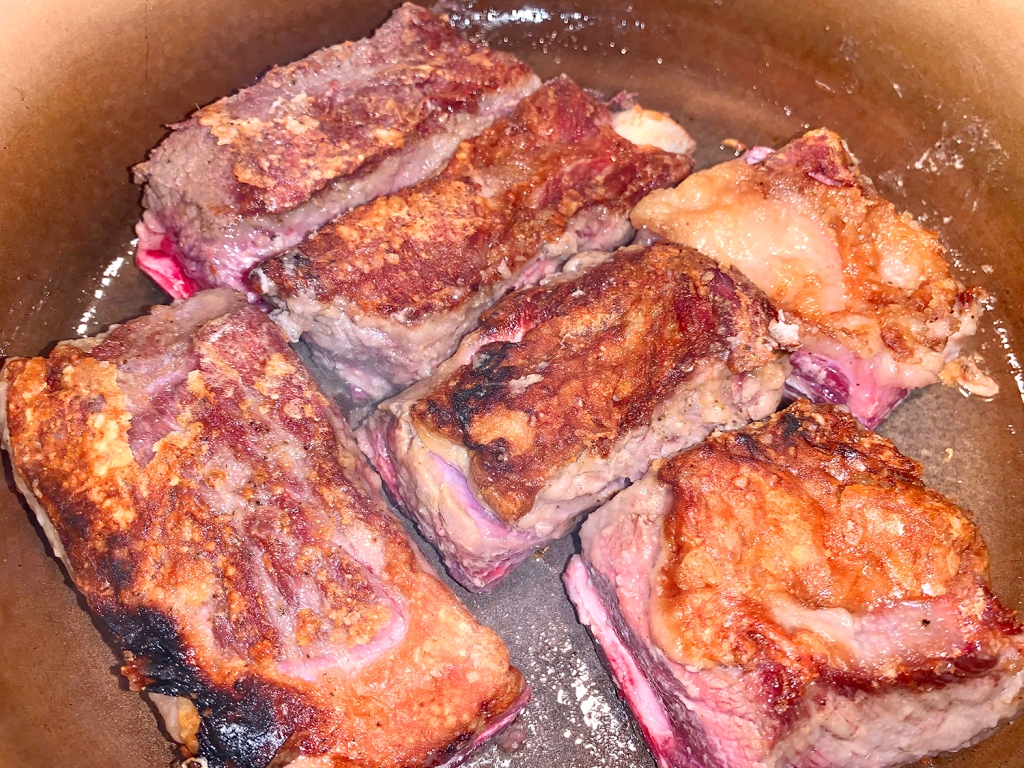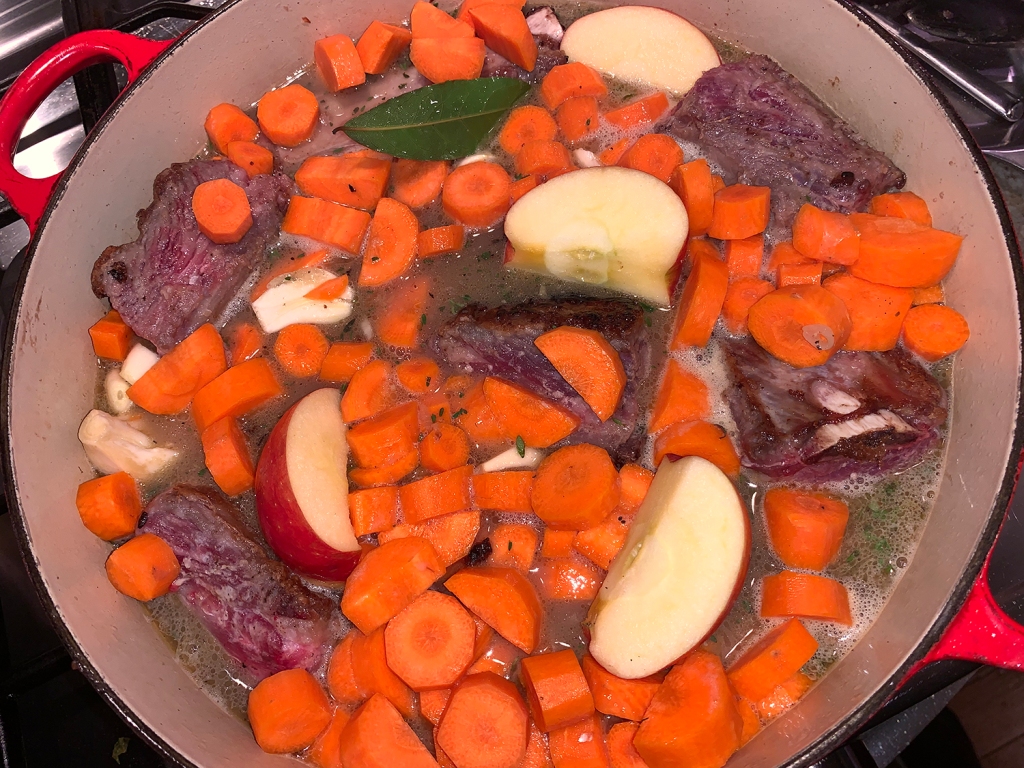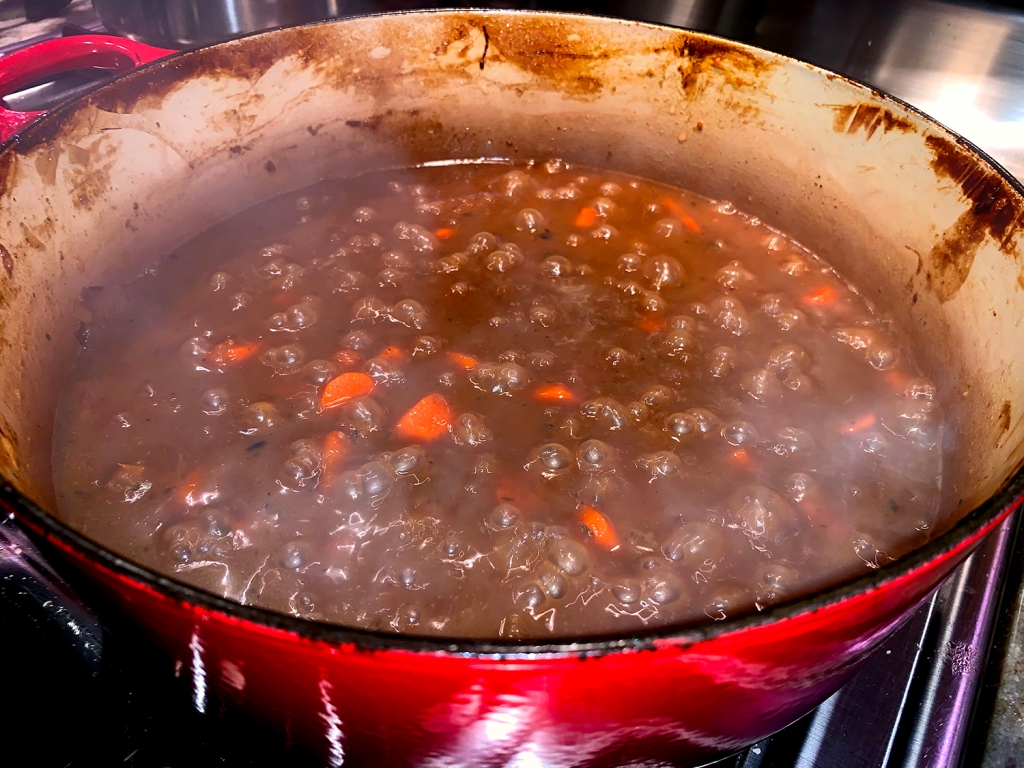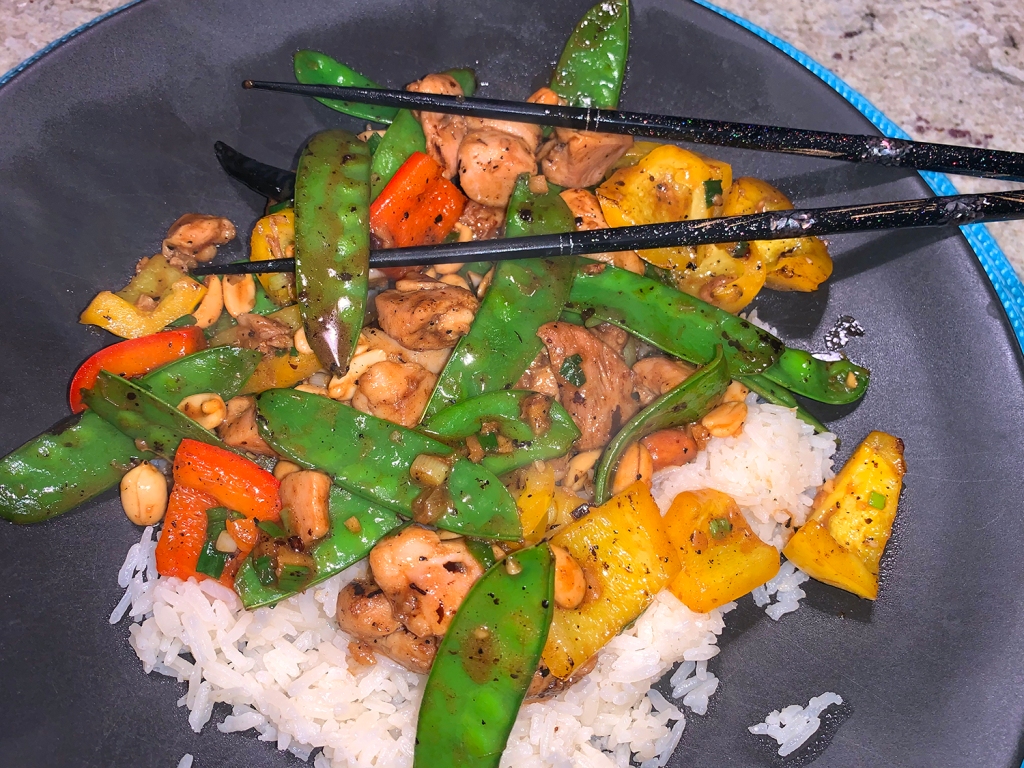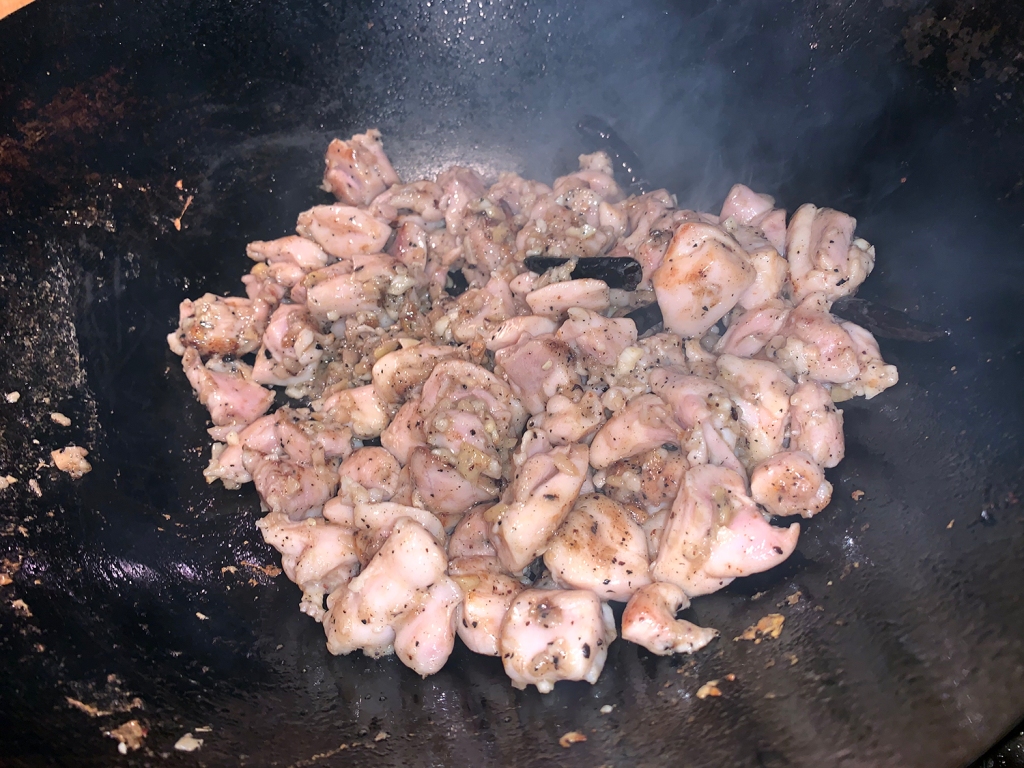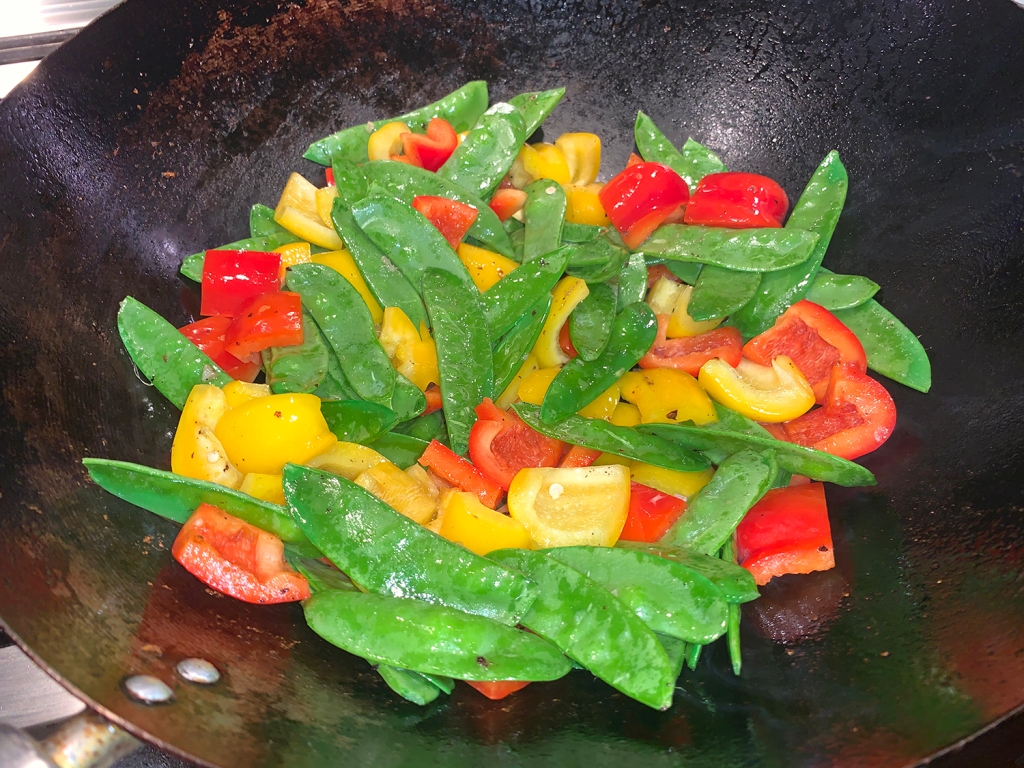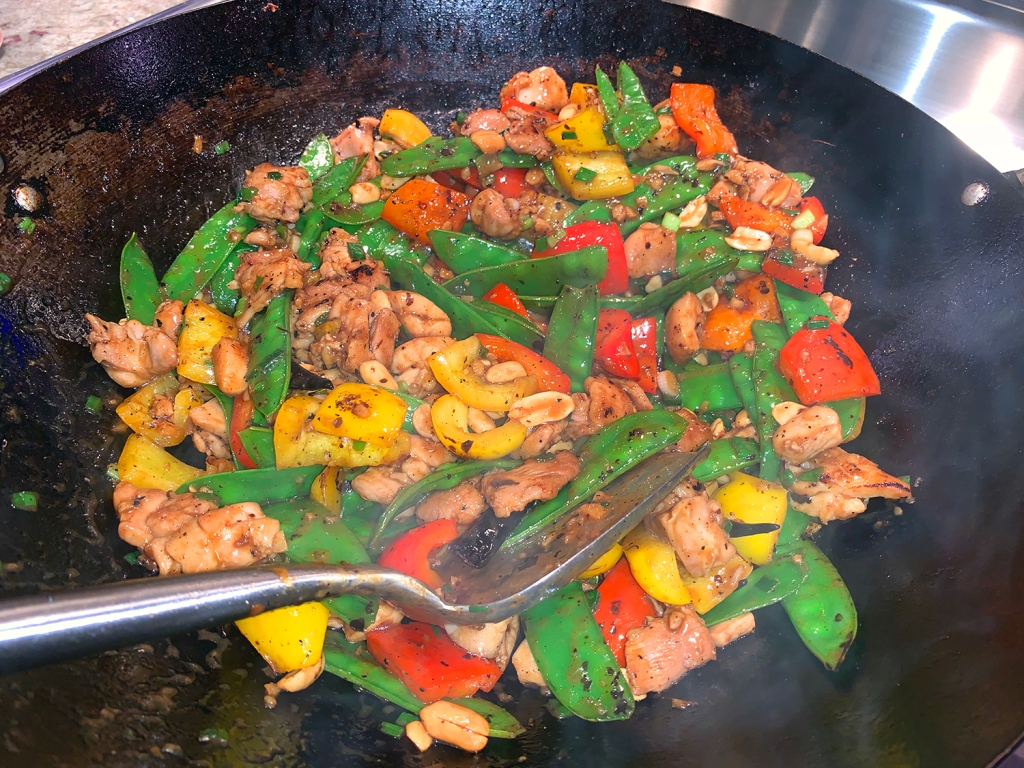Ever eat Bangers and Mash that left you underwhelmed? So this version found in Milk Street Magazine, enticed us to want to try making it on our own. It’s clearly not a complicated recipe, and the flavor profile looked downright yummy. So after ordering the Marmite online, and receiving it a few days later, we took the plunge.

Great bangers and mash with onion gravy, the iconic British pub staple, revolves around plump, well-browned links napped with an ultrasavory sauce. Searing the sausages ensures that the links develop attractive, flavorful browning; steaming cooks them through gently so that they are plump and juicy.
Adding the onions (thin-sliced so that they softened quickly) to the pan to steam with the sausages jump-starts their cooking. Continuing to sauté them after the sausage comes out further softens them and caramelizes their sugars; doing so also develops a deep, flavor-packed fond on the bottom of the skillet.
Deglazing the pan with a highly seasoned beef broth captures the fond, and simmering the onions in the broth tenderizes them more and concentrates the flavor of the gravy. A cornstarch slurry and butter, whisked in just before serving, gives the gravy the requisite viscosity, shine, and richness.
To capture every bit of that savory flavor base, deglaze the pan with beef broth that is seasoned with dry mustard, rosemary, thyme, and Marmite the glutamate-rich British yeast extract that infuses the gravy with meaty fussed-over flavor. Marmite is sold at most grocery stores or easliy accessible online.
If Cumberland sausage is unavailable, you can substitute bratwurst or any mildly spiced fresh pork sausage. For the best-tasting gravy, cook the onions until a dark fond forms in the skillet. Serve the sausages and gravy over your favorite mashed potato recipe.
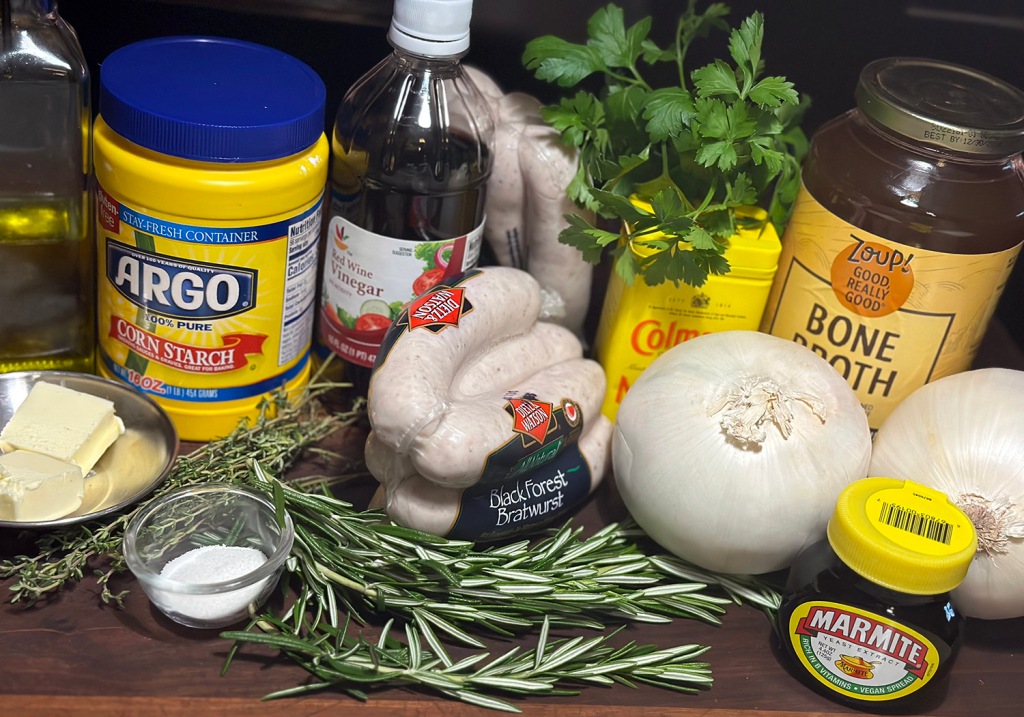
Bangers with Onion Gravy
Ingredients
- 1 Tbsp. vegetable oil
- 1½ lbs. Cumberland sausage (6 links)
- 2 onions, halved and sliced thin (3 cups)
- ½ cup water plus 1 Tbsp., divided
- 2½ cups beef broth
- 1 tsp. dry mustard
- 1 tsp. minced fresh thyme
- ½ tsp. minced fresh rosemary
- 1¼ tsp. sugar
- 1 Tbsp. Marmite
- ½ tsp. pepper
- ¼ tsp. table salt
- 1 Tbsp. cornstarch
- 2 Tbsp. unsalted butter, cut into 2 pieces
- 1 tsp. red wine vinegar
- 1 Tbsp. minced fresh parsley
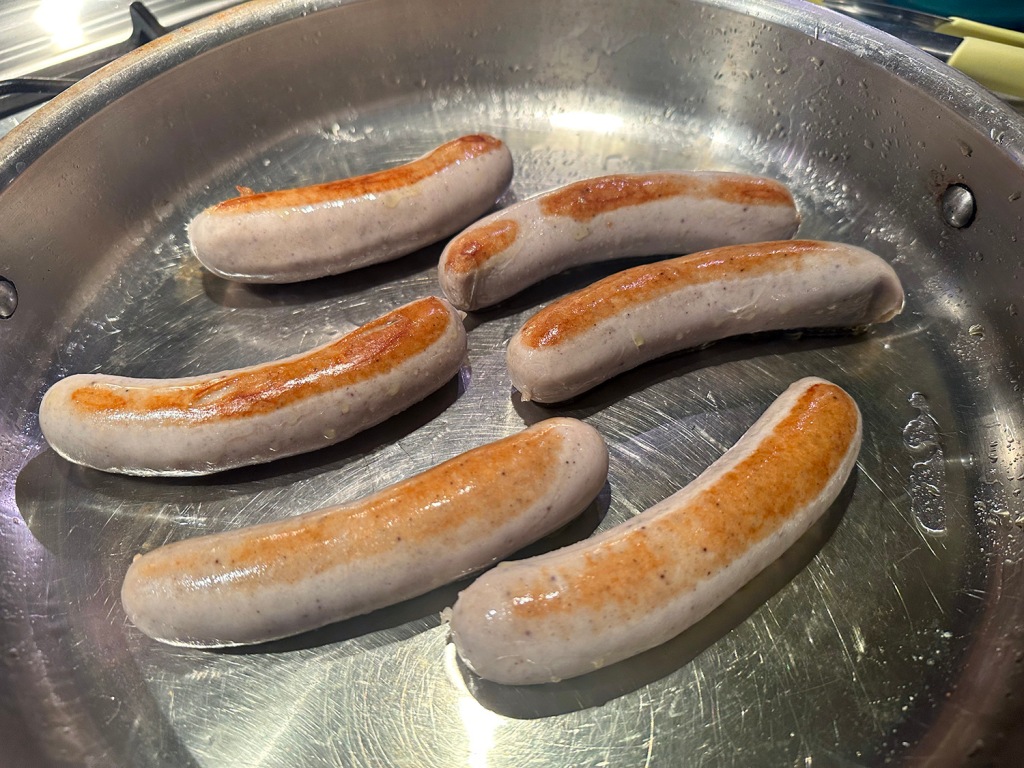




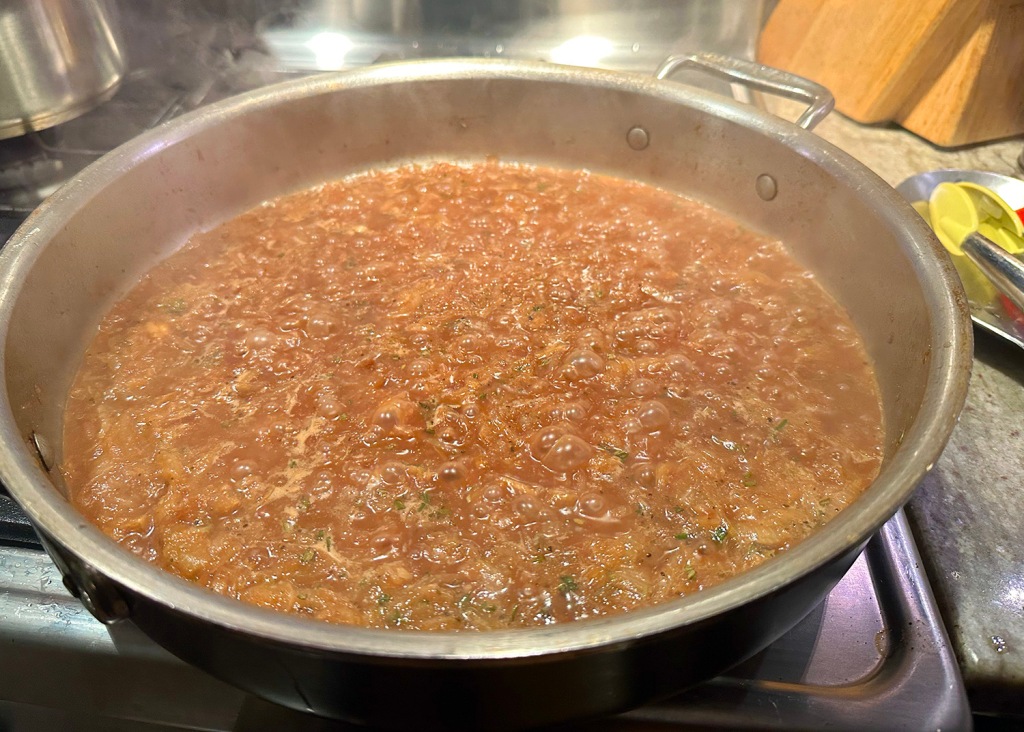

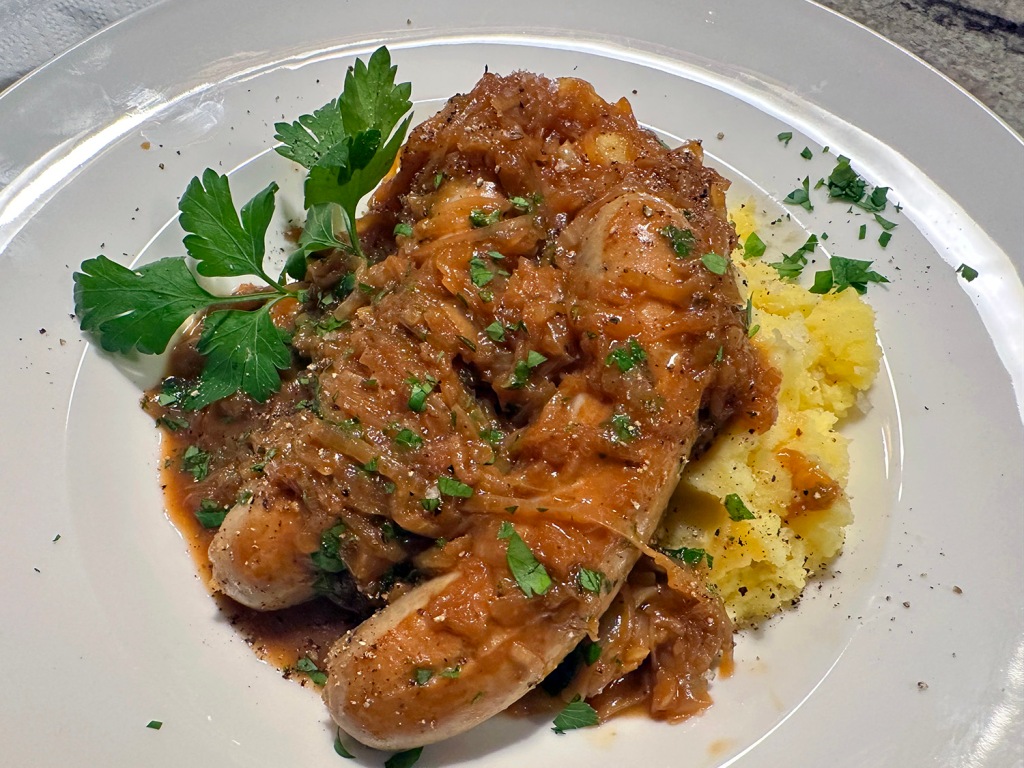
Directions
- Heat oil in 12-inch skillet over medium heat until shimmering. Arrange sausages in pan and cook, turning once, until browned on 2 sides, about 5 minutes. Move sausages to 1 side of skillet. Add onions, evenly distributing around bottom of pan, and nestle sausages on top. Add ½ cup water and immediately cover. Cook, turning sausages once until they register between 160 and 165 degrees and onions have softened, about 10 minutes.
- While sausages cook, whisk broth, Marmite, mustard, thyme, and rosemary in 4-cup liquid measuring cup until Marmite dissolves.
- Transfer sausages to plate and tent with aluminum foil. Make sure onions are spread evenly; cook without stirring until beginning to brown, about 5 minutes (if onions have not browned, increase heat to medium-high). Continue to cook, stirring occasionally, until onions are tender and well browned, and dark fond forms on bottom of skillet, 3 to 5 minutes longer. Stir in sugar, pepper, and salt and cook for 1 minute.
- Add broth mixture, increase heat to medium-high, and bring to boil. Cook, scraping up any browned bits from bottom and sides of skillet and stirring back into sauce, until sauce is slightly reduced, about 5 minutes. Combine cornstarch and remaining 1 tablespoon water in small bowl. Whisk cornstarch mixture into sauce and cook until sauce is glossy and has consistency of heavy cream, about 2 minutes.
- Off heat, whisk in butter, 1 piece at a time. Stir in vinegar and season with salt and pepper to taste. Sprinkle with parsley and serve.
Adapted from a recipe by Steve Dunn for Cook’s Illustrated






